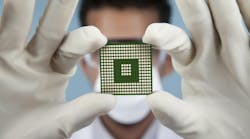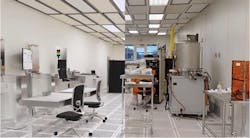The Tech Behind Upskilling the Semiconductor Workforce
What you’ll learn:
- The state of the semiconductor industry and barriers to entry for workforce development.
- How virtual twin technology is being utilized to upskill the semiconductor workforce.
In efforts to re-energize the U.S. semiconductor industry, the CHIPS Act was enacted in 2022. Significant investments have been made, but concern grows about the lack of domestically skilled workers. Electronic Design’s Andy Turudic talks with Bill DeVries, Vice President Industry Transformation and Customer Success, Dassault Systèmes, about the current industry climate, and what’s being done to address the workforce.
In what ways has the CHIPS Act impacted production and labor demands in the U.S. semiconductor industry?
The CHIPS Act has placed a renewed emphasis on expanding America’s global semiconductor footprint, which previously sat at about 10% in 2022, prior to the action. This investment is set to increase this number to 14% by 2032, as opposed to slipping down to 8%.
Thus far, about $450 billion in private investments have been made across over 80 semiconductor-based projects in the U.S. This includes corporations like Intel and Samsung, who are building new plants. However, in many cases, chipmakers are seeing a significant gap in the demand and availability of domestically skilled workers.
Current public and private efforts to train the semiconductor workforce are falling short as the industry aims to vigorously ramp up production. Without additional robust action, the CHIPS industry could be left with a shortage of 59,000 to 146,000 workers by 2029.
What are some barriers the industry is facing regarding semiconductor workforce training?
Closing the skills gap is very capital intensive to effectively scale the facilities used for training, manufacturing, and R&D. The most obvious example of this is the development of clean rooms for hands-on learning, and then we must adapt these clean rooms to keep up with the latest technological advances. That alone poses a tremendous barrier to entry.
Then, once these facilities are created, multiple other roadblocks emerge. Physical cleanrooms allow a limited number of people in them at a single time, meaning there is a built-in bottleneck to how many new members of the workforce you can train at a time.
Cleanrooms themselves are often unpleasant places as well—frankly, students don’t like being in them. That can be a turnoff for students matriculating through a program who may not feel inspired to continue their studies in the field. Unintentionally, we may be losing out on the next generation of the semiconductor workforce simply because of the physical conditions of their training.
What can the industry do to improve and accelerate semiconductor workforce development?
Successfully mending the industry labor shortage requires a coordinated effort between corporations and institutions of higher education. We really should look at their coordinated efforts as a responsibility to ensure we’re teaching students the right skills they’ll need for a changing semiconductor landscape. Corporations have the knowledge and financial resources to invest in the latest training techniques, and universities have the know-how and skillsets to develop programs that effectively capitalize on corporate investments.
For example, Lam Research and Dassault Systèmes have partnered with Purdue University to help buildout the school’s pioneering Semiconductor Degrees Program, equipping graduates with the knowledge and skills needed to thrive in the industry. The partnership enables Purdue to leverage Dassault Systèmes’ knowledge and digital technology to build and accelerate necessary training.
We have similar training partnerships in my area between Intel and Portland Community College and Portland State University, and the CHIPS Act has spawned academic/industry partnerships across the country. How can virtual twin technology help address the semiconductor industry’s talent and skills shortage? What specific types of modernized skills can workers obtain?
Virtual twin technology enables the most efficient and immersive training scenarios because they are built to be scientifically accurate. Virtual twins can create an interactive and dynamic replica of training environments like cleanrooms to enable remote training capabilities.
For example, Dassault Systèmes conducted a 3D scan of Purdue’s cleanroom, inclusive of new equipment not yet installed, to create a virtual training environment that is accessible to students through their laptops or mobile devices. Utilizing this virtual cleanroom, Purdue students can fully learn every step of the manufacturing process before stepping foot in the physical space.
Time spent in Purdue’s in-person cleanroom is precious as it only has the capacity to hold up to 10 students. By enabling remote training, students become productive when they enter the actual cleanroom because they are already well-versed in their surroundings.
Moreover, virtual twins significantly lower the capital requirements tied to building training facilities, allowing for widespread education with significantly fewer resources.
Looking ahead, how is virtual twin technology helping to shape the semiconductor workforce of the future?
Building a workforce with new-age skills requires leveraging new-age technologies to develop them. Much of the prospective workforce, namely Gen Z, will not settle for unpleasant working conditions and are attracted to the use of cutting-edge technologies to learn. Training through a facility’s virtual twin is comparably far more pleasant than spending lengthy time in physical spaces.
Additionally, these virtual environments enable trainees to get acquainted with the fabs at their own pace, allowing for increased on-the-job confidence and efficiency after graduation. In short: virtual twin technology makes the training process more enjoyable, scalable, and desirable.
AndyT's Nonlinearities blog arrives the first and third Monday of every month. To make sure you don't miss the latest edition, new articles, or breaking news coverage, please subscribe to our Electronic Design Today newsletter.


